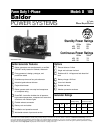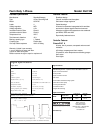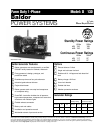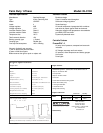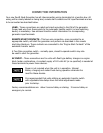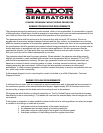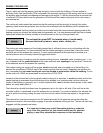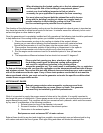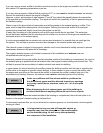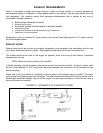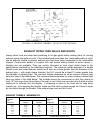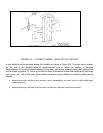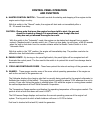
When discharging the heated cooling air or the hot exhaust gases
out through the side of the building or compartment please
contact your local building inspector to find out what is
necessary for your application to prevent a fire from occurring.
You must clean and inspect both the exhaust fan and its louvers
along with the building's cooling air intake on a regular basis to
prevent reduction in the building's cooling air flow. This could
lead to overheating and a potential fire or explosion.
The direction of the discharged heating cooling air and the discharged hot exhaust gases is important as
they have the potential to create brown spots on the lawn. In extreme cases this extremely hot air could
cause dried grass or other debris to ignite.
Once the generator set is completely installed and fully operational, the following test should be performed
to help determine if the cooling airflow system you installed is performing adequately.
1. Place a thermometer as close to the cooling air intake of the engine's blower
housing as you can without allowing the thermometer to touch any material surface.
Secure the thermometer so it can't be drawn into the engine when it is running.
2. Place another thermometer outside of the building or compartment in the open air
(Keep the thermometer out of direct sunlight or any other heat sources).
3. Run the engine under maximum load for an extended period of time (at least one
hour).
4. The temperature difference between the two should not exceed 15 degrees F.
Please note that opening any door, window or other opening in
the building could upset the directed cooling airflow pattern
and result in a significant reduction in the cooling airflow
across the generator set. This could result in overheating, fire, or explosion.
To find out if this is true with your specific application run the above-mentioned test with all doors
and windows closed. Then repeat this test with different doors and windows open, and eventually
with all the windows and doors open. If any of these tests produce results that do not meet the
above-mentioned criteria, you must not run the generator set under the specific conditions that
created these unappreciable results.
HOT EXHAUST GASES
Exhaust gases contain carbon monoxide, a poisonous and toxic
Gas. Carbon Monoxide can cause illness or death. This generator
set must Only be installed by qualified professionals.
While it is important to supply the proper amount of clean air to the cylinder, it is equally important to
discharge the gases of combustion. If these gases remain in the cylinder, poor performance or eventual
engine damage may result. This condition results from excessive back- pressure, which could be caused
by any one or a combination of the following conditions:
1. Exhaust pipes too long or the diameter is too small.
2. Excessive number of sharp bends in the exhaust system.
3. Obstruction in the exhaust system.
Backpressure must not exceed 20" of water column.
Exhaust lines should be as short and straight as possible, since extended runs and elbows tend to clog
with carbon and resist the flow of gases. Each pipe fitting and elbow will hinder the exhaust flow.



